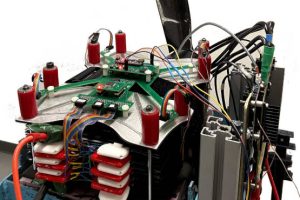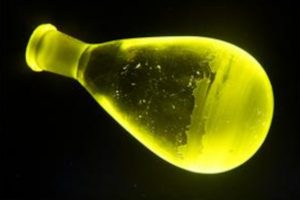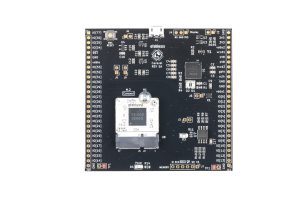PLA – poly lactic acid – is a 3d printable polymer that can be made from maize and is biodegradable. Except, it is seldom publicised, that it is only biodegradeable in industrial-scale high temperature processes, and will last of years in the open environment. Now researchers at the Toulouse Biotechnology Institute have engineered a designer enzyme – hyperthermostable PLA hydrolase ...
Research
The latest electronics research news from within the industry and universities from around the world.
Self-healing protection for perovskite solar
City University of Hong Kong (CityUHK) has developed another approach to quell the self-destructive tendencies of perovskite solar cells in the face of moisture. It is a corrosion inhibitor that tackles ionic defects in the perovskite layer within the solar cell stack, even those created after manufacture. “Applying a living passivator on the perovskite surfaces enhances their resistance to environmental ...
Digitally-tuned capacitors for 6G RF front-ends
Nanusens has demonstrated a mems digitally-tuneable capacitor for 5G and 6G RF front-ends, that is compatible with CMOS IC processing and can be integrated with circuitry. The Q-factor is above 100 at 1GHz, and the four-bit capacitor has a minimum capacitance of 450fF (30fF/capacitor) with them all off and tunes up to ~1pF – a capacitance ratio of 2.2 which ...
Jaxa teams with iQPS for on-orbit centimeter-level PPP demo
Jaxa is teaming with a Japanese company, iQPS, for on-orbit demonstrations that will estimate satellite orbital positions in real-time to centimeter-level accuracy. The Japanese space agency, has announced the joint research agreement as part of its Small Technology Innovation Satellite Research and Development Program. It will be partnering with iQPS (Institute for Q-shu Pioneers of Space) to enable a high-performance ...
University of Leicester space battery passes vibration tests
The University of Leicester is celebrating its progress towards developing a usable space battery employing radioisotope power technologies. Specifically, it highlights that its Radioisotope Thermoelectric Generator (RTG) has successfully completed its extreme vibration test campaign, proving the resilience that would be required for a rocket launch. Space battery The Space Nuclear Power group – a team at the University of ...
US puts up $1.6bn for packaging R&D
The U.S. Department of Commerce is to put up $1.6 billion to fund R&D to accelerate domestic capacity for semiconductor advanced packaging. The programme will focus on five areas: Equipment, tools, processes, and process integration; Power delivery and thermal management; Connector technology, including photonics and radio frequency (RF); Chiplets ecosystem; Co-design/EDA. Several awards of approximately $150 million per award in ...
High-power batteries for electric aviation
Subtle electrolyte changes can maintain power density in electric aviation batteries, according to the University of Michigan. While extended capacity retention is key for vehicle traction batteries, electric aviation demands power density retention from its batteries. “Both takeoff and landing require high power, and landing is more challenging because you’re not fully charged,” said Michigan engineering professor Venkat Viswanathan. “To ...
Scalable no-laser qubit integrated circuit for quantum computing has low noise
Researchers in Oxford have demonstrated a chip-scale trapped-ion quantum logic IC that works with all-electrical drive and a magnetic field. Because it avoids the need for per-qubit lasers, it is more easily scaled to many qubits, according to Oxford Ionics, the company behind it, which is working with the Universities of Oxford and Oregon. Oxford Ionics is also claiming a ...
Metal-free phosphor shows promise for OLEDs
Bright fast phosphorescence is possible without heavy metal ions such as platinum or iridium, according to a team at Osaka University. Its researchers came across a molecule, thienyl diketone, which is a champion among organic phosphorescers. “We discovered this molecule by chance and initially did not understand why it demonstrated such superior performance,” said Osaka scientist Yosuke Tani. “However, as ...
Efabless marks chip manufacturing milestone
At DAC 2024, Efabless celebrated a milestone of 40 commercial companies designed chips using its chipIgnite and Google-sponsored OpenMPW programme. Of these, some are ready for production volumes, the majority are at the prototype/proof of concept stage, said CEO, Michael Wishart. The platform allows start-ups and smaller companies to prototype designs and innovate without having to buy a license, he ...
 Electronics Weekly Electronics Design & Components Tech News
Electronics Weekly Electronics Design & Components Tech News








